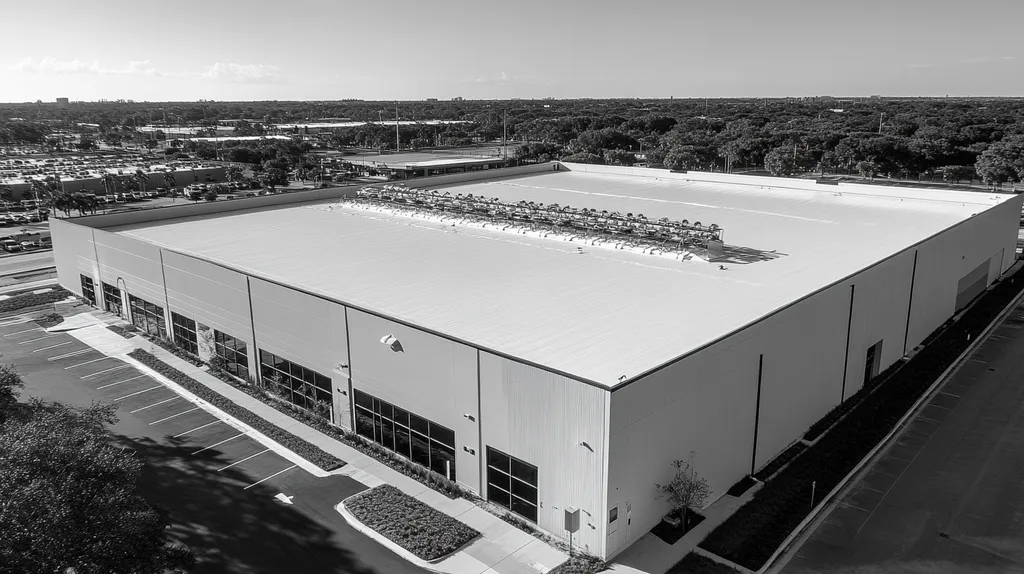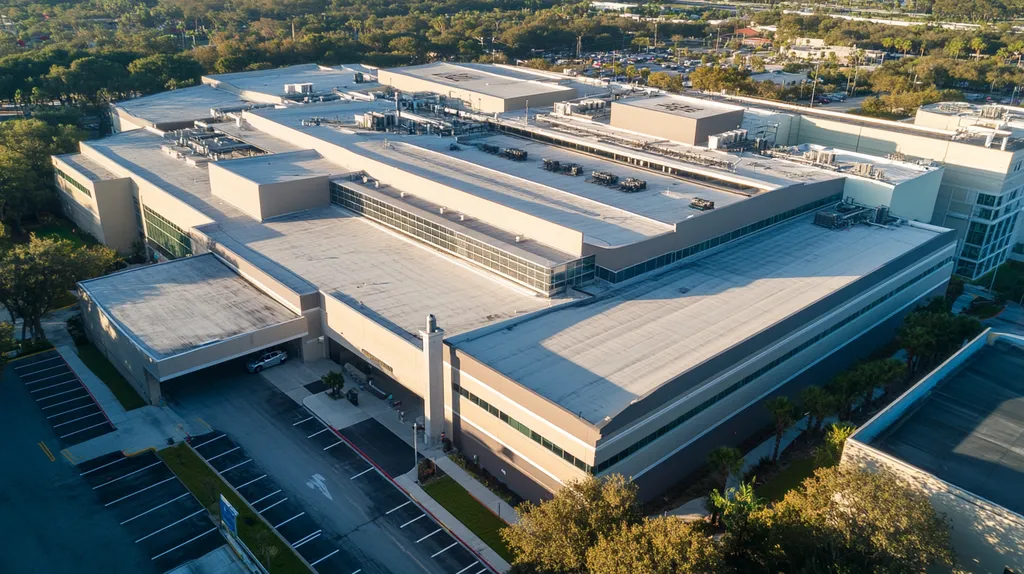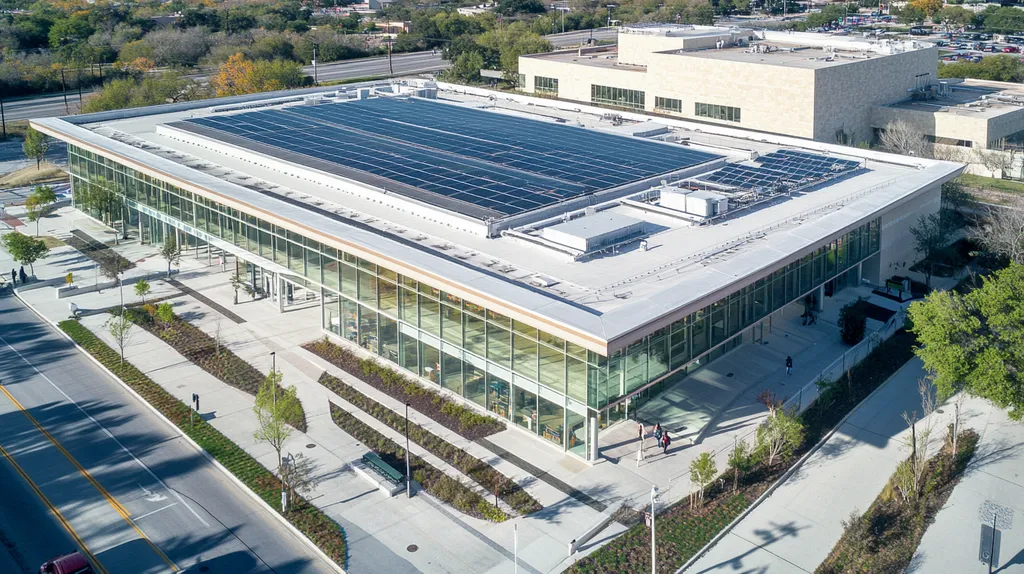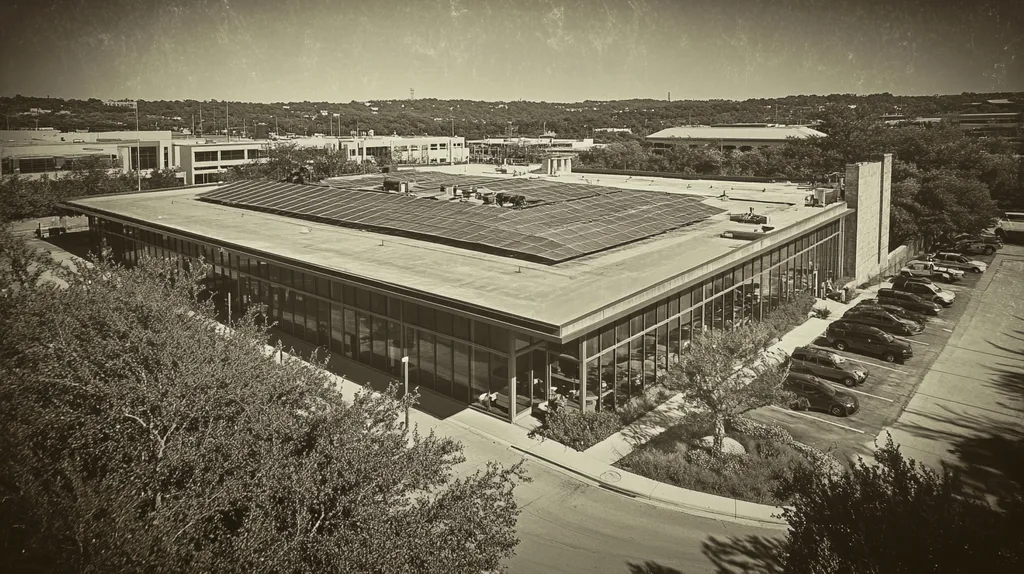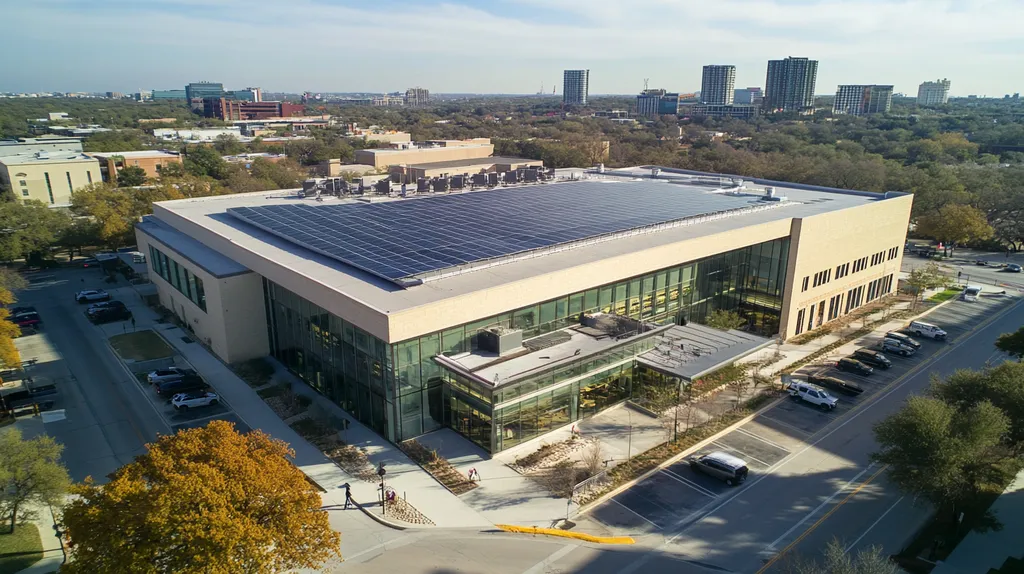In an industry where 40% of commercial roofs experience premature coating failures, traditional inspection methods are falling dangerously behind the times. Like examining a sophisticated timepiece with a magnifying glass alone, current practices miss critical underlying issues that can spiral into costly disasters.
From inadequate moisture detection to overlooked early wear patterns, outdated inspection protocols leave property owners exposed to unnecessary risks and escalating repair costs.
This critical analysis challenges established inspection practices, revealing how emerging technologies and data-driven approaches are reshaping the future of commercial roof maintenance.
SECTION 1: CURRENT PRACTICES
With a startling 40% of commercial roofs experiencing premature coating failures, the stakes for property owners are alarmingly high. Regular inspections of roof coatings are not just a precaution; they’re essential for preserving property value and avoiding eye-watering repair bills. Yet, current practices frequently miss the mark, neglecting vital details that could spell trouble later on. This section delves into the existing frequency, methods, and protocols of roof inspections.
Frequency and Timing of Inspections
The timing of roof inspections is often dictated by a standard practice that suggests checking in once or twice a year. This one-size-fits-all approach ignores critical changes that can occur after unpredictable weather events or gradual material wear. Research indicates that a concerning 30% of roof failures occur between these scheduled visits.
Moreover, many property owners overlook inspections following severe weather, such as storms or heavy snowfall. Delaying assessments until the next scheduled date means potential issues can fester, leading to surprise expenses and disruption of services.
A proactive strategy would involve inspecting roofs right after significant weather events, coupled with the regular biannual assessments. This could unveil urgent concerns that a rigid schedule would typically bypass.
In the end, a reactive inspection schedule can pave the way for costly repairs and plunge asset values into the depths.
Traditional Inspection Methods and Tools
Conventional roof inspections often rely on visual assessments augmented by basic tools like binoculars or cursory flashing checks. While these methods are common, they can blind inspectors to serious underlying issues, such as membrane adhesion failures or hidden water damage. Inspectors frequently lack specialized instruments capable of rigorously evaluating coating integrity.
Additionally, the reliance on subjective judgments can yield inconsistent results, given that different inspectors may employ varying techniques. This variability makes it challenging to maintain a standardized level of quality during inspections.
Investing in advanced diagnostic tools—such as infrared thermography or moisture detection—can provide insights that visual evaluations overlook. These cutting-edge technologies pinpoint moisture pockets and thermal irregularities that could indicate potential coating issues.
By embracing modern methods, property owners can access more dependable data, enhancing their decision-making regarding roof maintenance.
Common Inspection Checklists and Protocols
Common inspection checklists often prioritize visible components like seams, flashing, and surface debris. While these items are important, they barely scratch the surface of potential roof coating failures. Many checklists also lack the specificity required for different coating systems, leading to evaluations that may overlook unique vulnerabilities.
An effective checklist should include thorough assessments of adhesion, elasticity, and ultraviolet (UV) resistance. Neglecting these factors may mislead property managers into thinking their coatings are performing optimally.
Additionally, standard protocols typically do not stress the importance of tracking conditions over time. Without monitoring changes, property managers risk making misinformed decisions, as they become blind to troubling trends.
Revamping checklists to incorporate more comprehensive evaluations can empower property owners, enabling them to make informed decisions regarding repairs or replacements and ultimately prolonging roof lifespan while protecting their budgets.
SECTION 2: SYSTEMIC ISSUES
Current inspection practices for commercial roof coatings often overlook subtle yet critical issues that can lead to significant complications. Astonishingly, a recent study revealed that nearly 40% of roof failures are attributed to undetected degradation, sparking costly repairs and operational disruptions. Property owners and facility managers need to grasp these systemic challenges to circumvent hidden expenses and safety hazards. This section will delve into the inadequate detection of subtle problems, safety risks during manual inspections, and the limited scope of visual assessments.
Inadequate Detection of Subtle Issues
Many inspections fall short in identifying subtle yet impactful issues, such as tiny cracks or blistering under the outer coating. These seemingly minor flaws can escalate into major problems if left unchecked. Undetected moisture infiltration from unnoticed cracks can trigger mold growth, posing health risks for building occupants.
A closer look reveals that property managers often rely heavily on visual assessments, overlooking the potential of advanced detection technologies. Innovative tools like infrared thermography and moisture meters can uncover hidden issues that standard inspections often miss, transforming the inspection approach from reactive to proactive.
By adopting these advanced methods, inspections can prevent small problems from ballooning into costly repairs. Enhancing detection not only safeguards the roof’s integrity but also bolsters tenant satisfaction and preserves property value.
Safety Risks in Manual Inspections
Manual inspections come with their fair share of risks, exposing workers to potential falls and other hazards. Roofing personnel often navigate steep surfaces or contend with adverse weather, making safety an ever-present concern. Alarming statistics show that falls account for nearly 40% of construction-related fatalities, underlining the importance of recognizing these dangers.
Neglecting safety can lead to tragic outcomes and heightened liability for property owners. Moreover, many inspections proceed without robust safety protocols, increasing risks for workers during evaluations.
Implementing strict safety standards and leveraging technology, such as drones, can significantly reduce these dangers. Drones can collect vital data without putting personnel in harm’s way while capturing high-resolution images of roof surfaces.
Investing in safer inspection methods not only protects workers but also boosts overall operational efficiency. Fostering a culture of safety ensures that inspections are thorough without compromising the welfare of employees.
Limited Scope of Visual Inspections
Though visual inspections are the industry standard, they have significant limitations. Many inspectors conduct cursory evaluations of accessible areas, often neglecting hidden spots crucial for the roof’s performance. Components like flashings, seams, and joints require meticulous examination for potential wear.
This narrow focus raises the risk of overlooking serious issues that can worsen over time. Research indicates that visual inspections might miss up to 30% of problems affecting a roof’s longevity.
To counter these limitations, property managers must advocate for more thorough inspection methods, including technology upgrades that extend coverage across the entire roof structure.
Embracing a more holistic approach not only prolongs the roofing system’s life but also protects against unexpected repair costs. Comprehensive inspections lead to proactive management and well-informed maintenance decisions.
SECTION 3: MISSED OPPORTUNITIES
Overlooking the nuances of commercial roof coating inspections can lead to disastrous consequences and surprisingly high costs. Disturbingly, up to 80% of roofing failures are linked to untreated moisture problems. When hidden moisture and unnoticed heat leaks are ignored, buildings face severe structural damage and those dreaded unplanned repair bills. Fortunately, recognizing early indicators of wear and implementing predictive maintenance can effectively reshape these challenges into manageable opportunities.
Overlooking Hidden Moisture and Heat Leaks
Hidden moisture infiltration acts like a silent saboteur for commercial roofs, often escaping notice during typical inspections. Failure to identify these leaks can spell disaster, leading to rot, mold, and long-term deterioration of essential roofing systems. Facilities that cut corners on inspections risk incurring hefty water damage costs, negatively impacting both the roof and the building’s interiors.
Heat leaks, meanwhile, contribute to soaring energy bills. An inadequately insulated roof allows heat to escape, especially in colder months, which forces heating systems to work overtime. The result? Accelerated wear and tear on the roofing material and increased energy expenditures—definitely not a budget-friendly situation.
To tackle these hidden foes, embracing advanced moisture detection technologies is crucial. Tools like thermal imaging cameras and moisture meters allow maintenance teams to detect potential problems early, enabling timely interventions. This proactive strategy not only saves money but also significantly extends the roof’s lifespan.
Facilities that prioritize these technologies safeguard their assets and maximize their roofing investments. Taking action against hidden threats keeps roofs operating at peak efficiency, ultimately enhancing overall building performance.
Failure to Address Early Signs of Wear
Ignoring early warnings of wear can lead to headaches as minor issues snowball into massive problems. Consider minor cracks or peeling coatings—issues that can escalate if left unattended. Unfortunately, many inspections gloss over these indicators, while property owners defer maintenance, risking extensive repair costs.
Fortunately, proactive maintenance strategies can significantly reduce repair bills. Regular monitoring of roofing systems allows facilities to address minor repairs promptly, thereby lengthening their roofs’ lifespan. This forward-thinking approach helps avoid costly disruptions to operations often tied to major roofing failures.
Moreover, neglecting early signs of wear can jeopardize warranty claims. Manufacturers commonly require diligent maintenance documentation for warranty validity. Falling behind on inspections could void warranties, leaving property owners with hefty bills for repairs.
Establishing a regular maintenance schedule that includes periodic visual inspections greatly enhances roof longevity. Training staff members to recognize early wear signals empowers property managers to act decisively before serious issues take root.
Neglecting Predictive Maintenance
Predictive maintenance—the unsung hero of proactive roofing management—is often overlooked. This strategy uses monitoring techniques to forecast when repairs should take place, warding off unnecessary costs. Without it, roofs can quietly deteriorate, leading to rising maintenance expenses.
In a world where downtime translates to lost revenue, predictive maintenance offers substantial financial benefits. Facilities employing regular thermal imaging can identify energy losses and hidden moisture threats, minimizing disruptions and streamlining repairs.
Additionally, neglected roofs pose safety hazards. Standing water can lead to slippery conditions, creating fall risks. Overlooking predictive maintenance endangers workers and opens the door to liability issues that can amplify financial strain.
Investing in predictive maintenance tools and equipping staff with the right training provides invaluable insights into roof health. By making informed, data-driven decisions, property owners can significantly extend their roofs’ lifespans while ensuring safe environments for tenants.
SECTION 4: ROOT CAUSES
Addressing the root causes of ineffective inspection practices in commercial roof coatings is critical for safeguarding investments and ensuring longevity. Alarmingly, studies reveal that inadequate inspections contribute to nearly 30% of premature roof failures, leading to unnecessary repair costs and plunging property values. This section dissects three primary concerns: the reluctance to adopt new technology, insufficient training for inspectors, and a lack of comprehensive data collection and analysis.
Lack of Advanced Technology Adoption
The roofing industry has been notably sluggish in adopting advanced technologies, such as drone inspections and thermal imaging. These innovations can reveal hidden damage and vulnerabilities that traditional inspection methods often overlook. For instance, drones can cover extensive areas quickly, providing high-resolution images that allow for detailed analysis.
By resisting these technological advancements, the accuracy of roof inspections suffers. Property owners could find themselves investing in coatings that simply can’t endure stress, ultimately leading to financial losses and safety risks.
Moreover, conventional inspection techniques often require trained personnel to physically access rooftops, raising safety concerns. The advent of remote sensing technology reduces these risks significantly, allowing for safer and more efficient inspections.
In summary, the reluctance to embrace technology is a substantial barrier preventing comprehensive inspections and timely interventions.
Insufficient Training for Inspectors
Many roof inspectors do not receive the specialized training necessary to identify the nuances associated with modern roof coating issues. This knowledge gap can result in overlooked damage or misguided maintenance recommendations, with research indicating that 40% of inspection failures stem from inadequate training.
Current training programs may not address emerging materials or techniques, leaving inspectors unprepared to assess the latest coatings effectively. For example, the flexibility of certain new materials requires a specific understanding not covered in traditional training.
This gap leads property owners to trust assessments that may lack both depth and accuracy, resulting in unexpected repairs that could have been avoided with well-trained inspectors.
Enhancing training programs to foster an understanding of new technologies and coating systems can significantly elevate inspection quality, ultimately protecting property owners’ investments.
Inadequate Data Collection and Analysis
A key aspect of effective roof inspections is the meticulous collection and analysis of data. Many current inspection processes fall short in systematic documentation, hindering the ability to identify trends over time. Without a solid data foundation, management decisions become speculative at best.
The absence of historical data can lead to recurring issues that might have been addressed with proper trend analysis. Additionally, poor record-keeping can complicate warranty claims, jeopardizing potential financial recovery.
Furthermore, inadequate data collection results in a reactive rather than proactive approach to maintenance. This ultimately drives up costs and shortens the roof’s lifespan.
By enhancing data collection methods, the industry can significantly improve the reliability of inspections and preventive measures, leading to smarter, more informed decisions.
DATA DRIVEN EVIDENCE
In today’s fast-paced commercial roofing landscape, sticking to old inspection methods poses serious risks—potentially missing up to 30% of damage that could lead to headaches down the line. By embracing futuristic technologies like AI, drones, and thermal imaging, property owners can take proactive steps to safeguard their investments. This section will unpack how these innovations can redefine inspection practices, making them more accurate and efficient, ultimately benefiting maintenance decisions.
AI and Drone Inspection Accuracy
The game-changing combination of AI and drone technology is elevating roof inspections to new heights—literally! Drones provide access to those tricky spots that are hard to reach, capturing high-resolution images that can uncover problems like cracks or blisters that our eyes might easily miss.
When combined with AI algorithms, these drone images undergo a detailed analysis that quickly identifies any irregularities and generates thorough reports. This level of precision means fewer missed issues and a shift from reactive repairs to proactive maintenance.
Research shows that inspections via drone can be up to 80% more effective than traditional methods, which means property owners could save substantial amounts on repairs by catching issues sooner rather than later.
The capacity to log conditions over time also allows for better strategic planning. With accurate data at hand, facility managers can confidently decide what maintenance is necessary, making budgeting a breeze.
Thermal Imaging and Real-Time Data
Introducing thermal imaging: a technology that unveils hidden roofing issues in real time! By detecting temperature variations, it highlights areas of moisture intrusion or insulation troubles—problems that, if left unresolved, can spiral into serious, costly damage.
Utilizing thermal imaging during inspections can dramatically elevate detection rates, with studies indicating it can reveal up to 70% more issues compared to standard visual checks.
This immediacy provides facility managers the ability to act swiftly. For instance, prompt action against moisture infiltration can put a stop to mold growth and structural decline, safeguarding tenants and preserving the building’s value.
For property owners, this data not only aids in immediate action but informs future budgeting and resource allocation, ensuring that attention goes to where it’s needed most.
Predictive Analytics in Roof Maintenance
Predictive analytics is shaking up how property managers approach roof upkeep. By crunching historical data alongside environmental variables, these cutting-edge models can forecast potential failures before they arise, effectively preempting unexpected repair costs.
For example, by analyzing previous weather patterns, property managers can predict stress on roofing systems, allowing them to take timely corrective actions and extend the roof’s life.
Evidence suggests that implementing predictive maintenance can lower overall costs by up to 20%. By zeroing in on high-risk areas, property owners can evade those costly downtimes that no one wants to deal with.
Moreover, these analytics bolster warranty management. Understanding potential risks helps ensure compliance with warranty terms, turning uncertainty into peace of mind and financial security.
SECTION 6: ALTERNATIVE SOLUTIONS
The stakes in maintaining commercial roof coatings have never been higher. With nearly 30% of roof failures traced back to inadequate inspections, property owners face mounting repair bills and declining value. Embracing innovative solutions like drone inspections, thermal imaging, and predictive maintenance can transform outdated practices into proactive, effective strategies. These alternatives are not merely enhancements; they are essential for a smart approach to facility management.
Implementing AI-Powered Drone Inspections
The integration of AI-powered drones into roof inspections marks a revolutionary shift in industry practices. Drones can scan extensive areas in a fraction of the time required by traditional methods, providing real-time data that captures hard-to-reach spots without exposing workers to risk.
Equipped with advanced AI algorithms, these drones analyze imagery for signs of wear or damage, minimizing human error and enhancing accuracy. The result? Property managers benefit from reliable assessments that reduce unexpected repair costs.
For instance, a manufacturing facility employing drone technology reported a remarkable 30% decrease in unidentified roofing issues. This data-driven approach ensures decisions are rooted in precise information rather than assumptions, promoting longevity in roof coatings.
As drone technology continues to evolve, its capabilities expand, allowing for increasingly sophisticated analysis. This embrace of innovation empowers property managers to adopt a proactive strategy toward roof maintenance, ultimately safeguarding significant investments.
Utilizing Thermal Imaging and Machine Learning
Thermal imaging has become a game-changer in how roofing professionals identify potential issues. Unlike standard visual inspections, which may miss subtle moisture intrusion signs, thermal imaging reveals temperature variations, pinpointing areas at risk of failure before they escalate.
When paired with machine learning, this technology evolves into a formidable predictive tool. Algorithms analyze thermal data trends, predicting vulnerabilities based on historical patterns, which helps property managers stay ahead of potential problems and fine-tune maintenance schedules.
Commercial buildings leveraging these combined technologies have successfully uncovered hidden leaks and thermal inefficiencies. By tackling these concerns early, property owners can not only save on costly repairs but also improve energy efficiency.
As thermal imaging technology becomes increasingly accessible, its adoption will catalyze substantial shifts in inspection protocols. Transitioning to this proactive approach fosters a culture of preventive maintenance that bolsters overall roof longevity.
Adopting Predictive Maintenance Schedules
Predictive maintenance represents a proactive strategy that leverages data analytics to forecast potential roof failures. This technique diverges from past reactive models, where inspections occurred only after visible damage was observed. By analyzing various data sources, property managers can ensure roofs maintain peak performance.
Implementing monthly inspections driven by predictive analytics can slash unexpected maintenance costs by up to 50%. This allows business owners to plan repairs during off-peak hours, minimizing disruption to operations and leading to improved budgeting.
For example, a retail complex that made the switch to predictive maintenance witnessed a significant drop in emergency repair calls. A schedule informed by data trends facilitated timely interventions, preventing issues from ballooning into major concerns.
Transitioning to predictive maintenance not only enhances the longevity of roof coatings but also cultivates a more strategic approach to facility management. This shift is fundamental in an industry that demands efficiency and cost-effectiveness.
Moving Forward
With 40% of commercial roofs experiencing premature coating failures, the industry stands at a critical crossroads between outdated practices and transformative solutions.
The evidence is clear: traditional inspection methods miss up to 30% of critical issues, while AI-powered technologies can detect problems with 80% greater accuracy.
The integration of drones, thermal imaging, and predictive analytics isn’t just an upgrade—it’s an imperative shift that could save facility owners millions in preventable repairs.
Those who cling to conventional inspection practices risk not only their roofing investments but also the safety and efficiency of their facilities.
The future of commercial roof coating inspection lies in embracing these technological advances, transforming what was once a reactive necessity into a proactive strategic advantage.
FREQUENTLY ASKED QUESTIONS
Q. Why are current commercial roof inspection practices ineffective?
A. Current inspection practices often miss vital details and rely too heavily on visual assessments. With 40% of commercial roofs experiencing premature failures, inadequate inspections neglect critical factors, leading to costly repairs and asset depreciation.
Q. How can overlooked issues affect my industrial roof?
A. Undetected problems on your roof, such as minor leaks or cracks, can escalate into severe structural damage over time. Ignoring these issues can lead to expensive repairs and jeopardize the safety of building occupants.
Q. What are the consequences of inadequate training for roof inspectors?
A. Insufficient training can lead to oversight of significant roofing issues, resulting in expensive repairs later. Approximately 40% of inspection failures stem from untrained inspectors missing essential details, making it imperative for trained professionals to evaluate roofing systems.
Q. How does moisture impact commercial roofs?
A. Moisture infiltration can silently undermine the integrity of commercial roofs, leading to mold, decay, and severe structural damage. Left unnoticed, these issues can translate into exorbitant repair costs and unplanned maintenance for property owners.
Q. What role does predictive maintenance play in roof care?
A. Predictive maintenance utilizes data analytics to anticipate potential roofing issues before they arise. This proactive approach significantly mitigates unexpected repair costs, optimizes budgeting, and extends the roof’s lifespan by addressing problems early.
Q. How can advanced technologies improve roof inspections?
A. Advanced technologies like drones and thermal imaging enhance inspection accuracy by revealing hidden issues often missed by traditional methods. By capturing detailed images and data, property managers can make informed maintenance decisions, minimizing potential repair costs.
Q. What are the dangers of neglecting safety protocols during inspections?
A. Neglecting safety protocols can expose workers to serious hazards, including falls and weather-related risks. With falls accounting for a significant percentage of construction fatalities, prioritizing safety during inspections is crucial for protecting both workers and minimizing liability.


